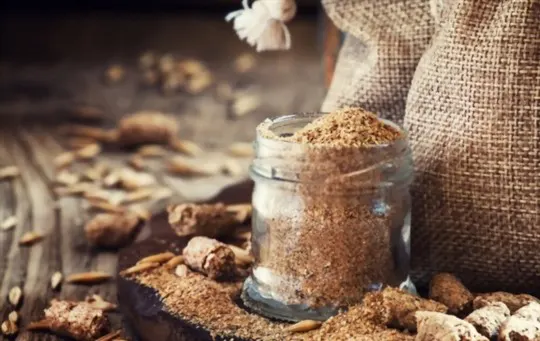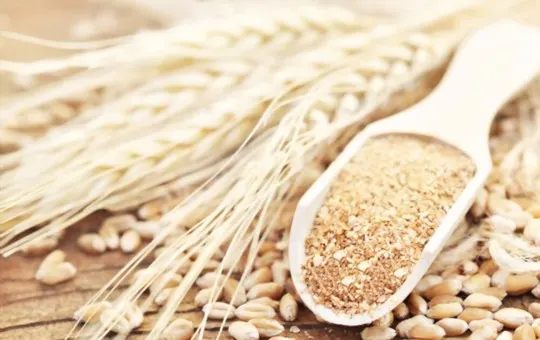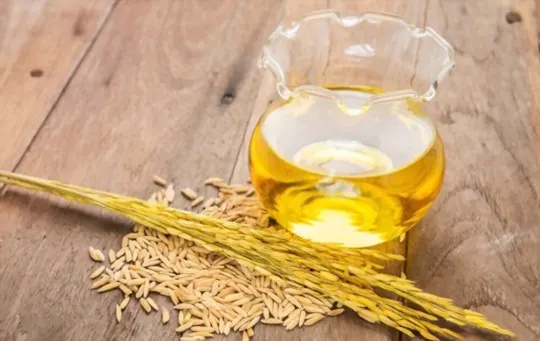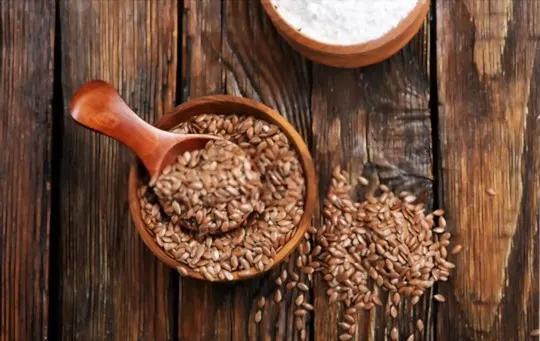Swapping out wheat bran in recipes can seem like a culinary curveball.
But here’s the scoop: you’ve got plenty of awesome alternatives.
Trust us, making the switch is easier than you think.
Sometimes, you’ve just gotta make do with what’s in the pantry.
And guess what? That can lead to some pretty tasty discoveries.
No wheat bran? No problem.
We’re here to guide you through some top-notch substitutes that keep your meals both nutritious and delicious.
These swaps are not only simple; they could become your new go-to.
Ready to dive into these alternatives?
What is Wheat Bran?

The bran is the tough, fibrous outer layer of cereal grain, especially wheat.
It consists of the combined aleurone and pericarp (bran).
Wheat brans are often heat-treated to increase their nutritional value and make them palatable; however, they should be reconstituted before use by soaking for 8–24 hours in water.
Wheat bran is a good source of dietary fiber, manganese, phosphorus, and selenium.
There are three types of fiber found in wheat bran- insoluble fiber, soluble fiber, and resistant starch.
When wheat bran is added to flour, it can increase the fiber content of bread and other baked goods.
Depending on their levels of oils, wheat brans are used in cereal bars and health foods as a source of dietary fiber or filler for food processing.
The 5 Best Substitutes for Wheat Bran
Wheat bran is a nutritious ingredient known for its high fiber content and nutty flavor.
If you are looking for substitutes for wheat bran or have dietary restrictions, there are several alternatives available.
In this guide, we will compare the top 5 substitutes for wheat bran, discussing their key characteristics and suggesting proper ratios to help you achieve similar results in your recipes.
| Substitute | Key Characteristics | Proper Ratio |
|---|---|---|
| Oat Bran | High-fiber bran derived from oats; slightly sweet with a nutty flavor | Use an equal amount of oat bran as a substitute for wheat bran |
| Rye Bran | Bran obtained from rye grains; dense and rich in fiber | Use an equal amount of rye bran as a substitute for wheat bran |
| Rice Bran | Bran extracted from rice grains; mild flavor and high in dietary fiber | Use an equal amount of rice bran as a substitute for wheat bran |
| Flax Seeds | Tiny seeds rich in omega-3 fatty acids and fiber; provide a nutty flavor | Use an equal amount of ground flax seeds as a substitute for wheat bran |
| Cornmeal | Coarsely ground corn kernels; adds texture and mild corn flavor to recipes | Use an equal amount of cornmeal as a substitute for wheat bran |
Now let’s dive into each substitute in more detail:
1 – Oat Bran

This is another great substitute for wheat bran.
Oat bran contains soluble fiber, which helps lower LDL cholesterol while improving the feeling of fullness.
It’s vital to note that this works best when you mix it with other fiber types, such as pectin or guar gum.
Oat bran is higher in calories than wheat bran.
It’s also higher in fiber and has more protein, fat, and carbohydrates.
Oat bran can be used to make muffins and bread.
When looking for a substitution, opt for one made from 100% whole grain oats.
Be careful to check the label to ensure it does not contain added sugar or other additives.
- Key Characteristics: Oat bran is a high-fiber bran derived from oats. It has a slightly sweet taste and nutty flavor, making it a suitable substitute for wheat bran.
- Proper Ratio: Use an equal amount of oat bran as a substitute for wheat bran. Adjust the quantity based on your recipe requirements and desired fiber content.
2 – Rye Bran

Rye bran is another great substitute for wheat bran.
It contains selenium and magnesium.
Selenium works as an antioxidant in the body.
It also boosts thyroid function, which helps with weight loss.
Rye bran is easy to add to your diet by using these substitutions.
Be careful to avoid any added sugars or other additives that may reduce their value.
It’s crucial to note that rye bran is high in fat; however, it’s still considered a healthy type of fat.
The main benefit is fiber, which helps lower cholesterol and controls blood sugar levels.
- Key Characteristics: Rye bran is the bran obtained from rye grains. It is dense and rich in fiber, making it an excellent alternative to wheat bran in terms of nutritional value.
- Proper Ratio: Use an equal amount of rye bran as a substitute for wheat bran. Adjust the quantity based on your recipe requirements and desired fiber content.
3 – Rice Bran

Another great substitution for wheat bran is rice bran.
It contains vitamin E, which makes it an antioxidant.
This is important because antioxidants help with the body’s ability to produce white blood cells.
Rice bran can also improve brain function by increasing circulation in the brain and increasing oxygen flow through the blood.
Rice bran can be used in all kinds of dishes.
It can be used as a healthy substitute for wheat bran or oat brans.
It’s crucial to note that rice bran is high in calories.
Although it contains antioxidants, you should not go overboard because they are also found in other non-processed foods.
- Key Characteristics: Rice bran is the bran extracted from rice grains. It has a mild flavor and is high in dietary fiber, making it a suitable option for those looking for a gluten-free substitute for wheat bran.
- Proper Ratio: Use an equal amount of rice bran as a substitute for wheat bran. Adjust the quantity based on your recipe requirements and desired fiber content.
4 – Flax Seeds

You can also use flax seeds as a substitute for wheat bran.
Flax is an amazing source of dietary fibers.
This type of fiber has significantly reduced blood pressure and cholesterol levels.
Flaxseeds are also rich in omega-3 fatty acids, which help decrease inflammation throughout the body.
Flax seeds can be used in a variety of ways.
They’re most commonly used in bread and baked goods.
In addition, you can add them to oatmeal or mix them with water and drink it.
You can also add these seeds to salads or use them as a thickening agent in soups.
The only drawback is that flaxseeds, like rye bran and rice bran, may contain many calories.
It’s crucial to note that these calories are still good for you.
- Key Characteristics: Flax seeds are tiny seeds that are rich in omega-3 fatty acids and fiber. When ground, they provide a nutty flavor and can be used as a substitute for wheat bran.
- Proper Ratio: Use an equal amount of ground flax seeds as a substitute for wheat bran. Adjust the quantity based on your recipe requirements and desired fiber content.
5 – Cornmeal

Last but not least, cornmeal is another great substitute for wheat bran.
It contains fiber, which helps lower LDL cholesterol and control blood sugar levels.
Cornmeal can be used in a variety of dishes.
You can use it by creating muffins or bread with it.
Alternatively, you could try adding it to your soups.
Another great substitution is to add it to your pancakes or waffles in place of flour.
It’s crucial to note that cornmeal does not contain gluten, so avoid using it if you have celiac disease.
Some people may also be allergic to corn, so it’s important to check with your doctor before using this substitute.
- Key Characteristics: Cornmeal is coarsely ground corn kernels. While not as high in fiber as wheat bran, it adds texture and imparts a mild corn flavor to recipes.
- Proper Ratio: Use an equal amount of cornmeal as a substitute for wheat bran. Adjust the quantity based on your recipe requirements and desired texture.
Conclusion
Wheat bran is an excellent source of nutrients, vitamins, and minerals that are vital to your health.
If you’re looking for a substitute for wheat bran, look no further than oat bran, rye bran, rice bran, flax seeds, or cornmeal.
While these substitutes provide benefits similar to wheat bran without any risks, it’s crucial to note that these substitutes may contain many calories.
If you’re trying to lose weight, it’s best to use moderation when consuming these substitute products.

The 5 Best Substitutes for Wheat Bran
Ingredients
- Oat Bran
- Rye Bran
- Rice Bran
- Flax Seeds
- Cornmeal
Instructions
- Pick your favorite substitute from the list above.
- Follow cooking directions for your selected substitute with the proper ratio of ingredients.

Andrew Gray is a seasoned food writer and blogger with a wealth of experience in the restaurant and catering industries. With a passion for all things delicious, Andrew has honed his culinary expertise through his work as a personal chef and caterer.
His love for food led him to venture into food writing, where he has contributed to various online publications, sharing his knowledge and insights on the culinary world. As the proud owner of AmericasRestaurant.com, Andrew covers a wide range of topics, including recipes, restaurant reviews, product recommendations, and culinary tips.
Through his website, he aims to inspire and educate fellow food enthusiasts, offering a comprehensive resource for all things food-related.

Leave a comment